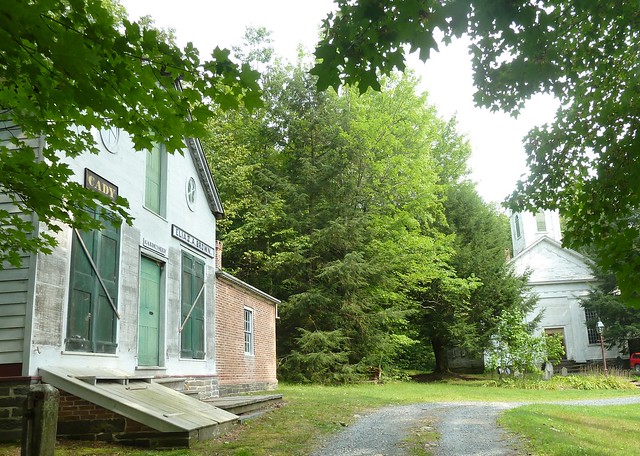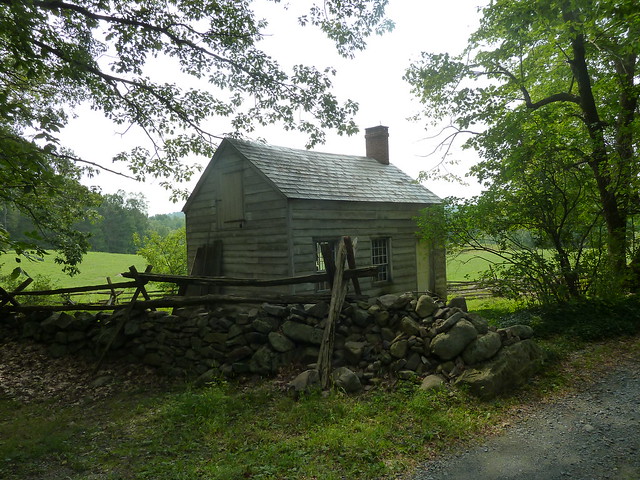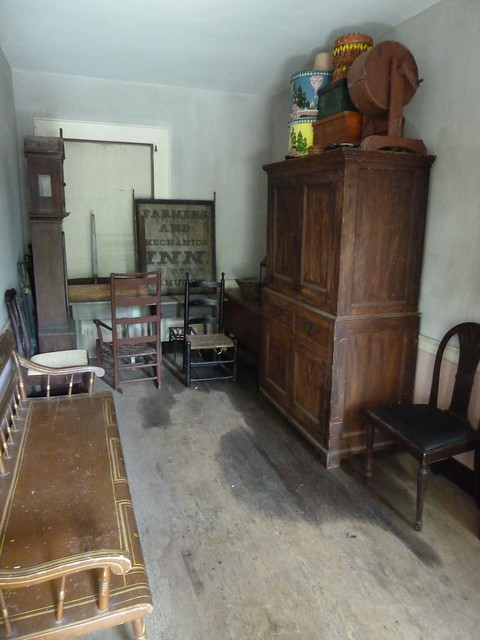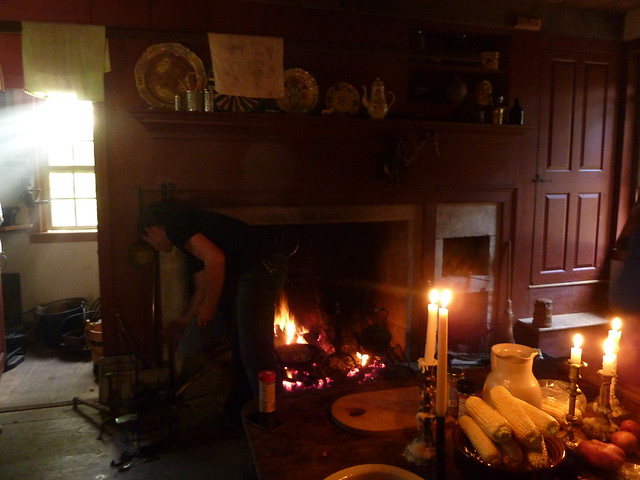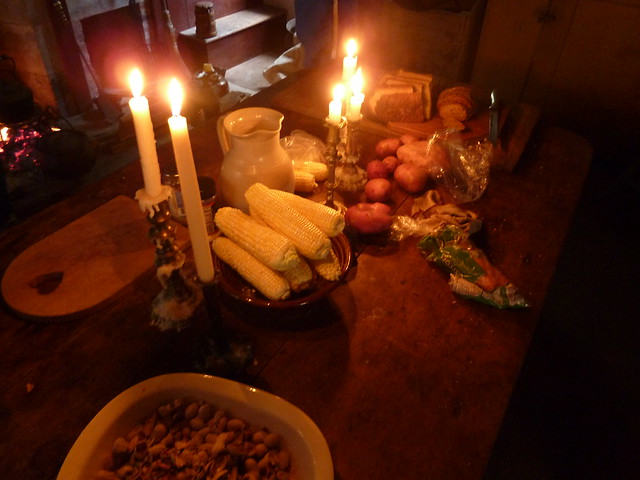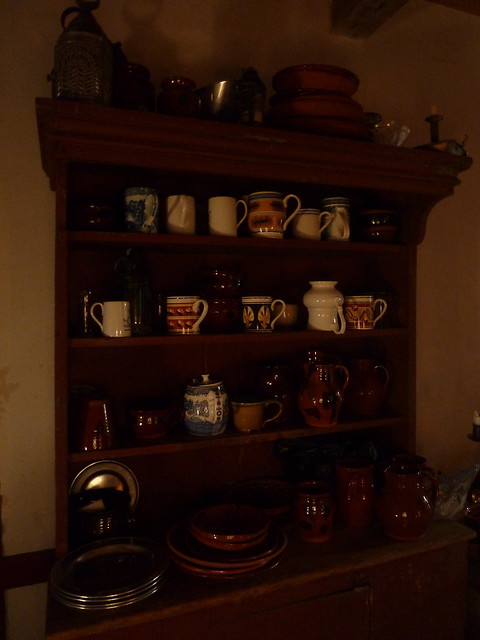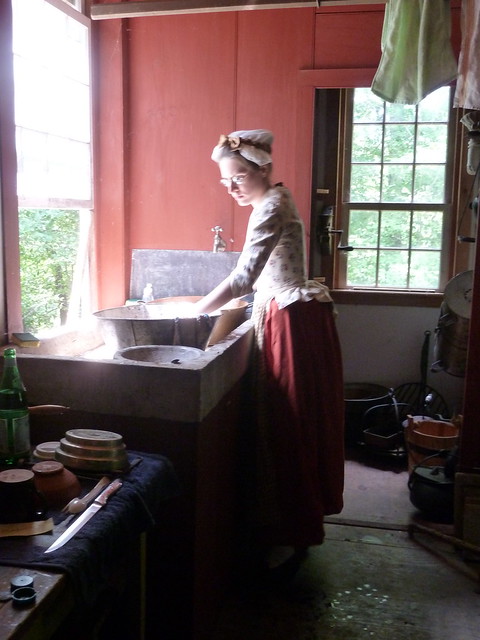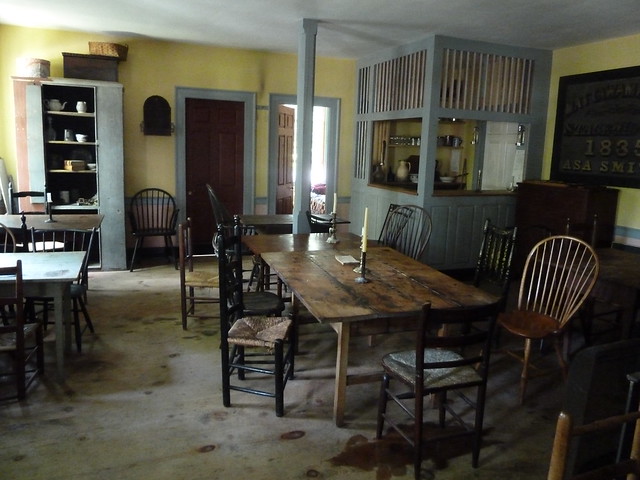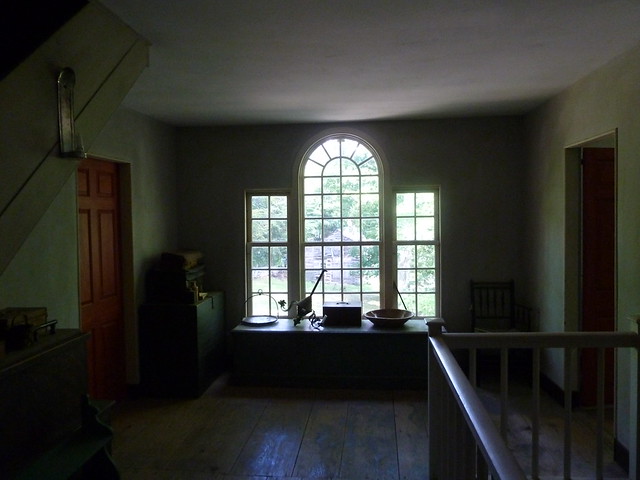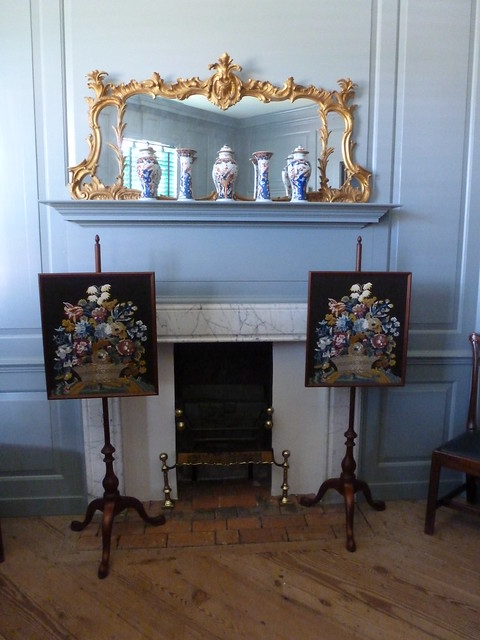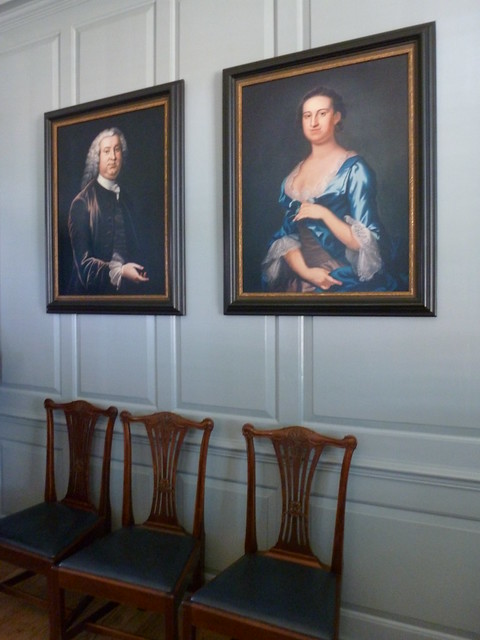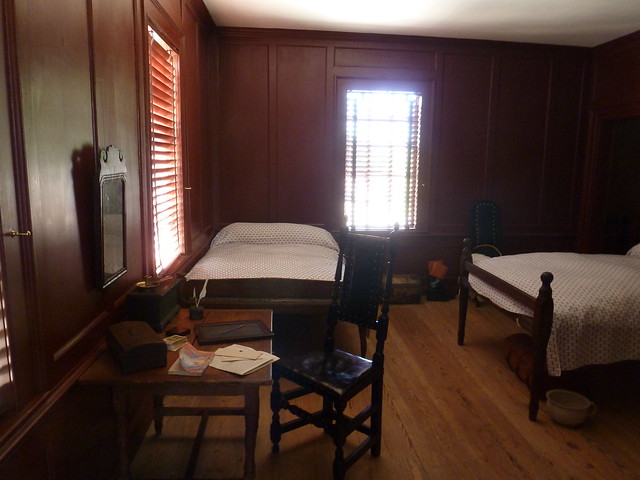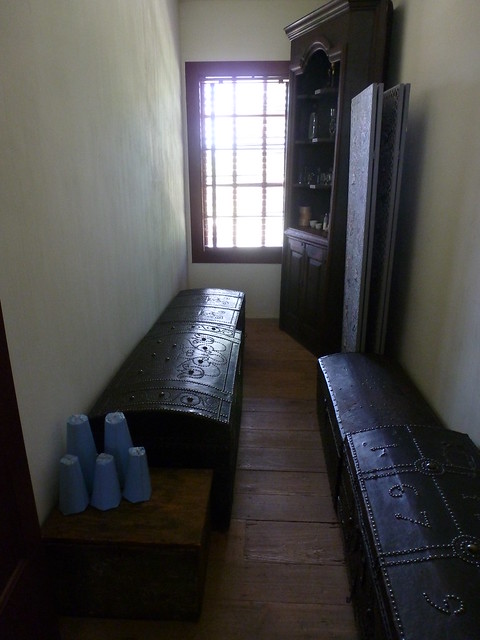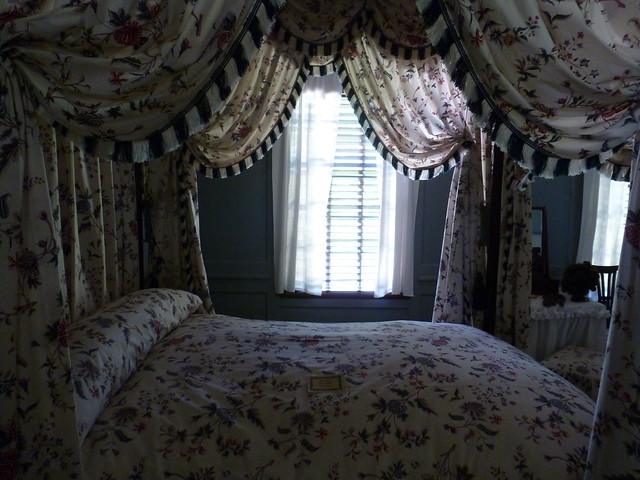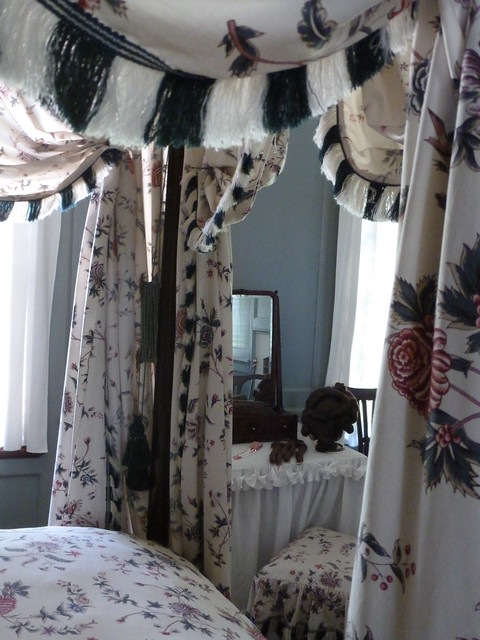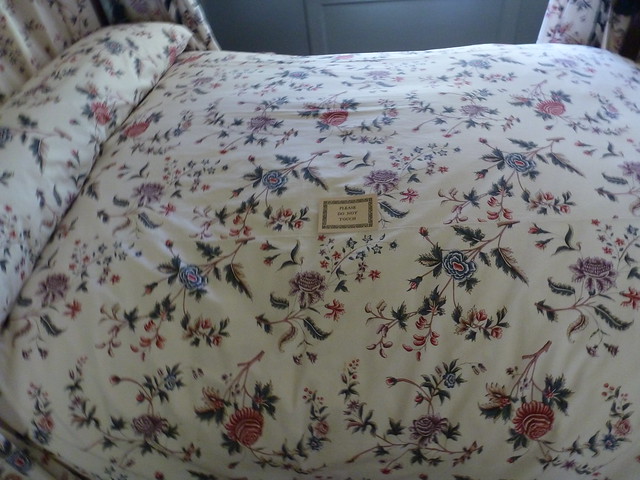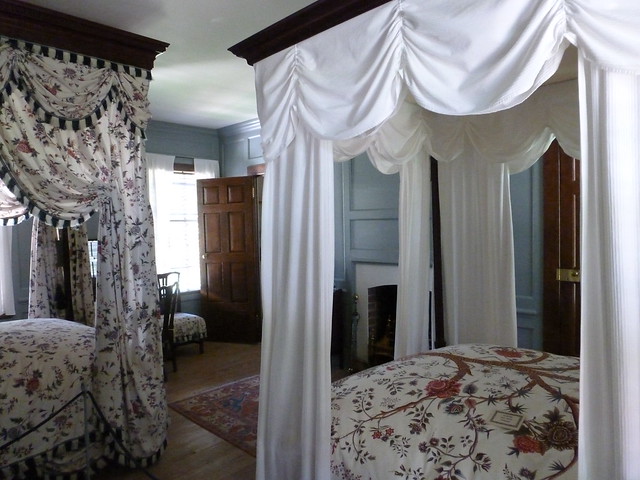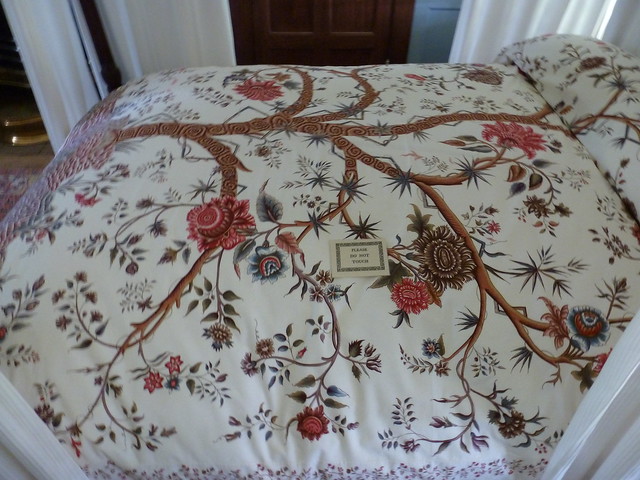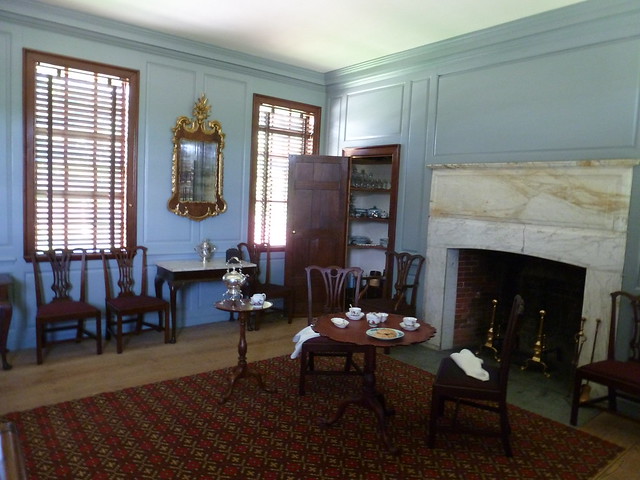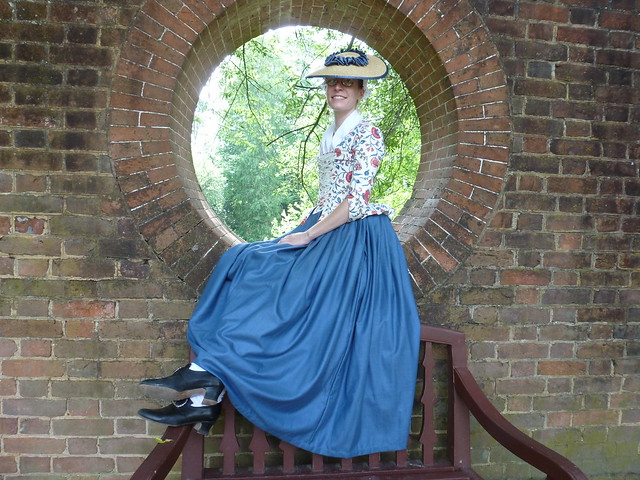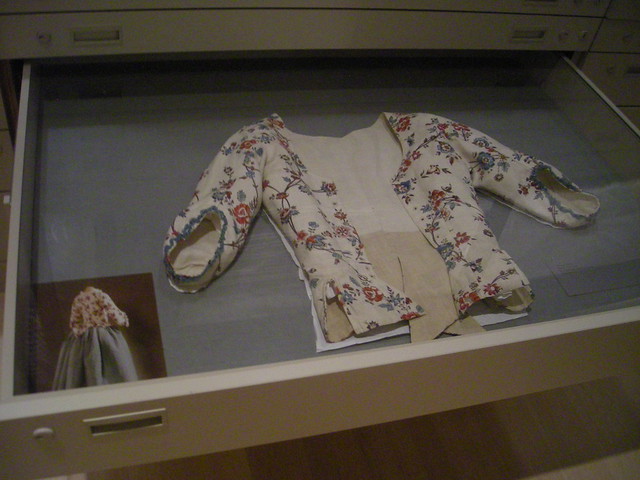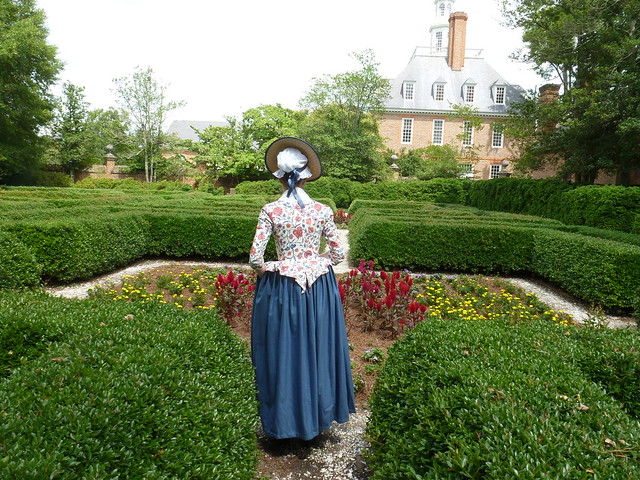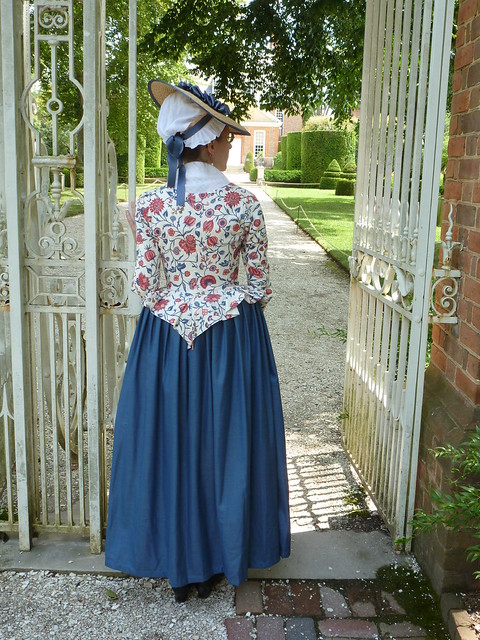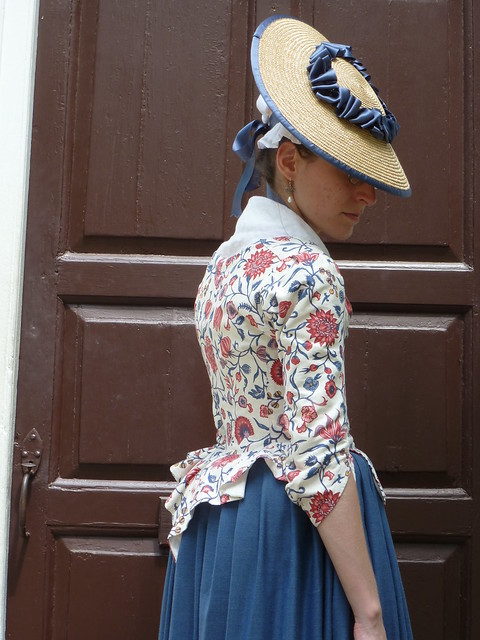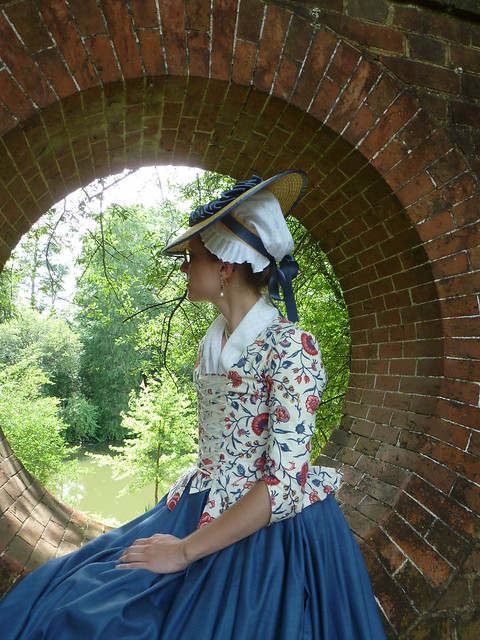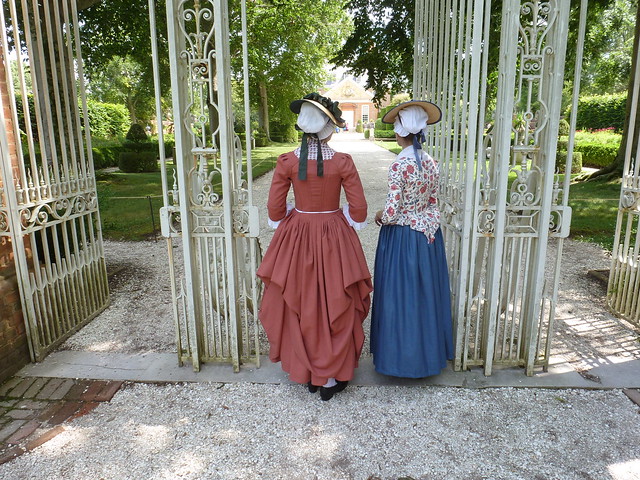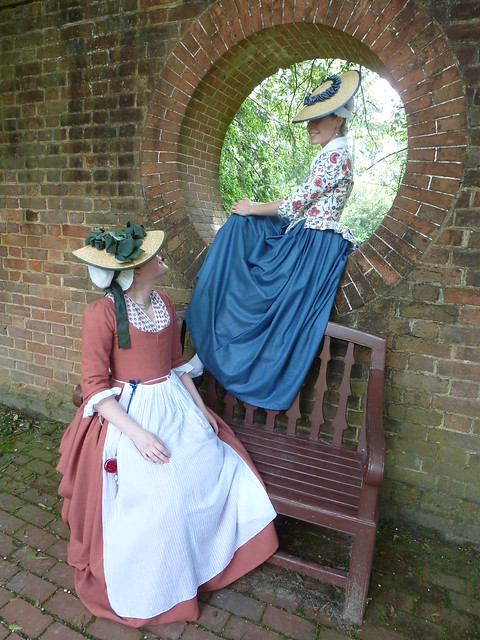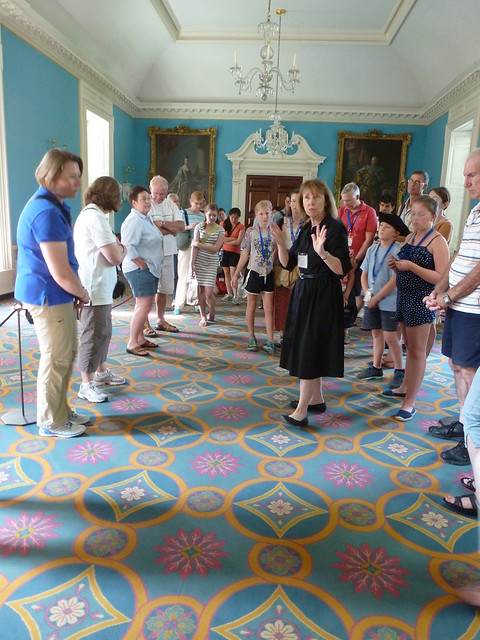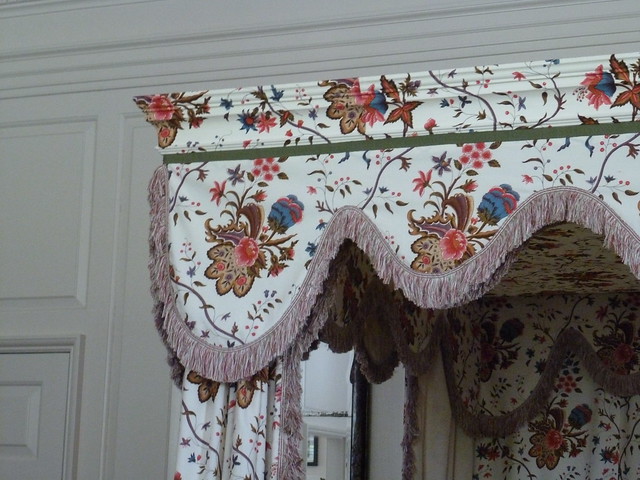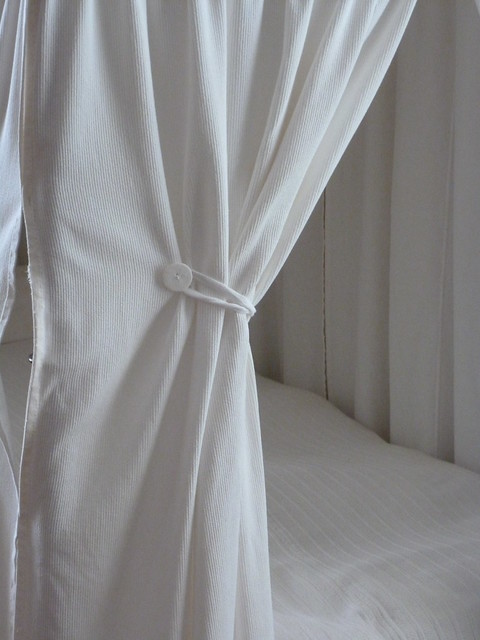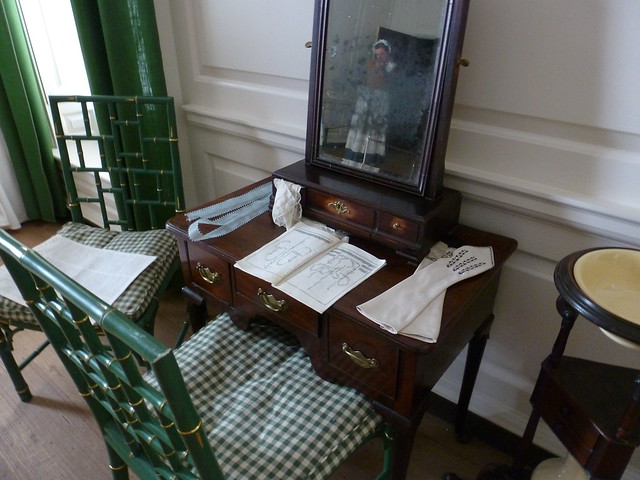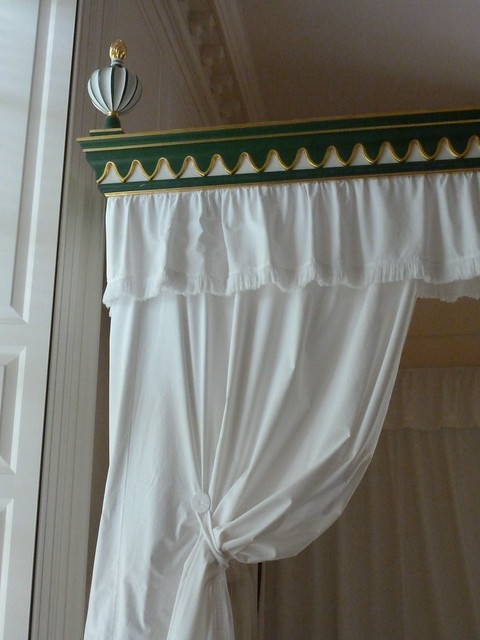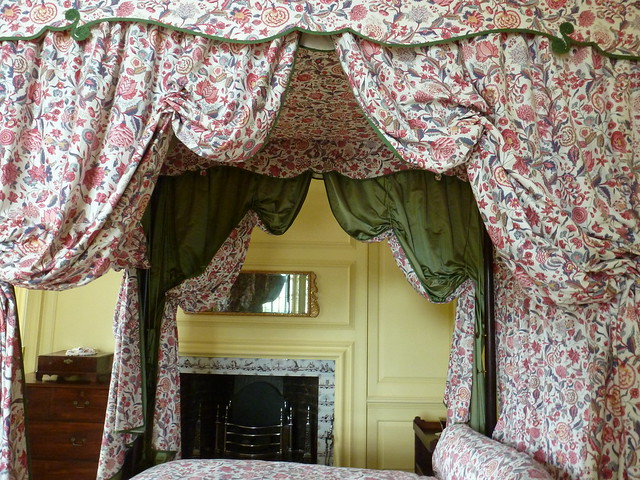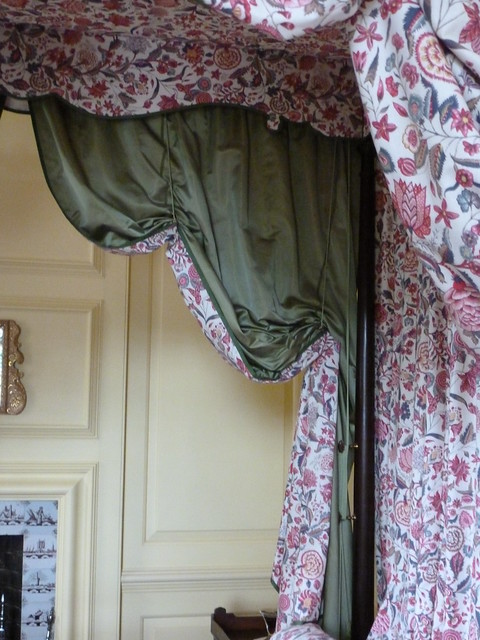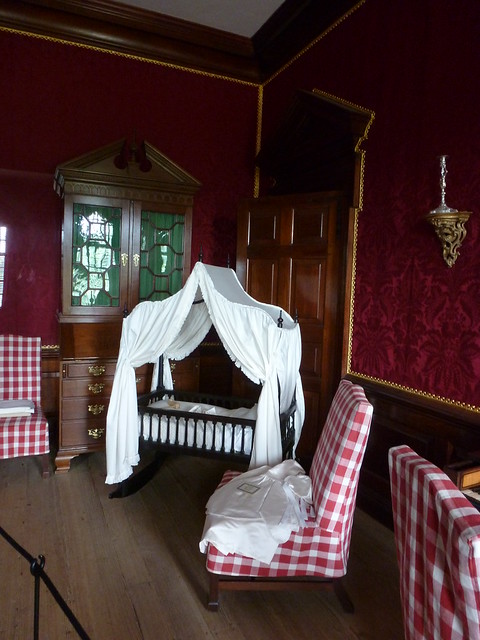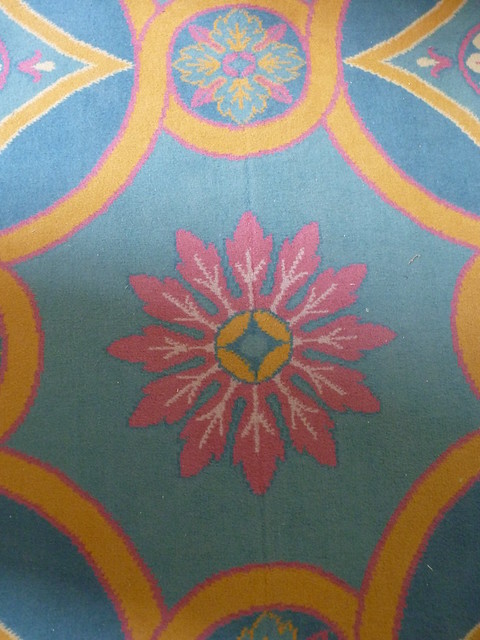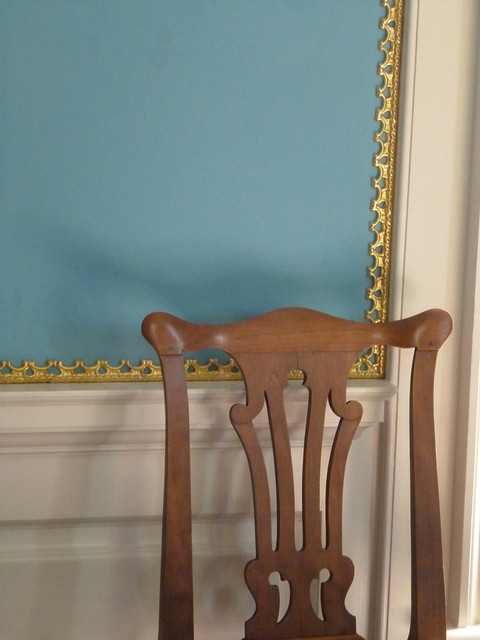- Rebecca
Eastfield Village is nestled in New York's eastern countryside (just east of Albany and west of Pittsfield, Massachusetts) among lush farmlands and winding back roads. Eastfield was constructed in a manner similar to Old Sturbridge Village in that all of its historic buildings were moved from their original locations to this property to create a period "village" atmosphere. Don Carpentier has been collecting these buildings and the massive and varied collection of antiques inside of them in order to create this idyllic historical village. Unlike OSV, however, Eastfield is not the typical living history site of the sort you might expect; indeed, it brings the term "living" history to an entirely different level. Anyone may stop by the village to explore on their own, but if you do, you will not find constant interpreters or docents on site. For the casual visitor, your experience would be literally stepping into a working 18th century town, but with the residents on vacation. While the property includes two taverns, a church, a general store, a blacksmith's forge and other trade shops, and multiple houses and barns, the village's primary purpose is to host workshops and events that promote pre-industrial crafts and trades. To learn more about Eastfield Village, Mr. Carpentier's work, and the many and fascinating workshops currently scheduled to take place at the site, please visit his website.
Our workshop was held in Eastfield Village's Briggs Tavern, which is a 1793-1803 building, restored to its original appearance and function, fully-furnished with usable antique furniture and household items. Although wired for electricity in two of its rooms, electric lights and a modern water system are not available, so we cooked all of our meals over the fire in the kitchen hearth and washed all our dishes in a large soapstone sink with only cold running water (if you wanted hot water, it had to be heated the traditional way!).

Briggs Tavern kitchen, showing many signs of being lived in over the course of the week!
Eastfield Village, August 2011.
Preparing supper the first evening in the tavern's kitchen.
Eastfield Village, August 2011.
Our very traditional evening meal from the first night of the workshop.
Eastfield Village, August 2011.
The kitchen cupboard, well stocked with reproduction mugs, plates, and
utensils, all of which we used daily throughout the week.
Eastfield Village, August 2011.
Ashley doing the breakfast dishes.
Briggs Tavern, Eastfield Village, August 2011.
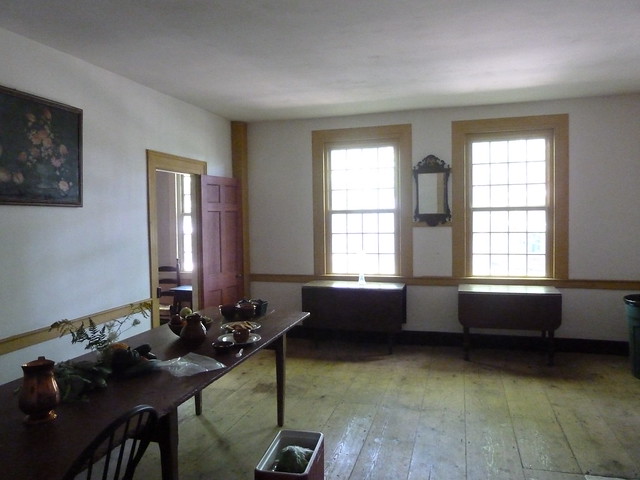
One of the public rooms of the tavern, which we used as a secondary space to prepare and serve meals.
Eastfield Village, August 2011.
Our light as we worked and eat and went about our days was provided by only natural light and candles, and yes, we even used traditional outhouses! Most of the workshop participants also slept in this building; being a tavern, its many bedchambers are outfitted with multiple antique rope beds and sleeping spaces (for various reasons we opted for modern sleeping accommodations off-site). Those of us participants who were reenactors dressed in our 18th century clothing for much of the week, taking full advantage of the site's unique ambiance to fully immerse ourselves as we learned our 18th century trade.
Briggs Tavern dining room, where we ate our meals and enjoyed each others' company.
Eastfield Village, August 2011.
Our workshop for the week was the beautiful upstairs "ballroom" of the tavern, a large, spacious room flooded with the ideal amount of natural light during the long summer days. Even without electricity, we were able to work until past 8pm every evening. One evening, after darkness fell, we even cleared the center of the room and put the space to its original function for a dance, which began as it traditionally should with a minuet followed by country dances.
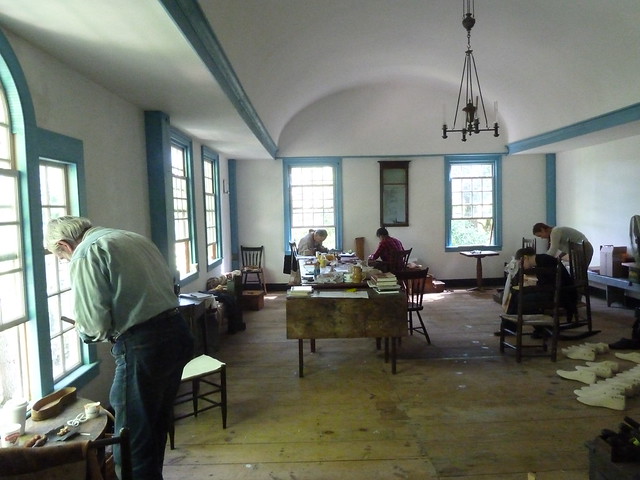
Briggs Tavern ballroom, transformed to our shoemaking "workshop" for the week.
Eastfield Village 2011.
Over the course of the week, we also had plenty of time during breaks to explore the other buildings on the site, and to sample some of Mr. Carpentier's extensive collection of books, tools, antiques, and his own beautiful pieces of pottery. In her post about the workshop, Emily has shared some lovely photos of both the tavern in which we worked, and some of the other buildings and goodies filling them on the Eastfield property.
In the next post, we'll outline the workshop and the details of the week during which we began to learn the art of shoe-making the 18th century way. Although challenging in more ways than we could have anticipated, it was an immensely rewarding and enlightening week, and we so enjoyed our indoctrination into the community of Crispin!
Briggs Tavern.
Eastfield Village, August 2011.
To learn more about Historic Eastfield Foundation and events and workshops taking place there, please visit their Facebook page.

